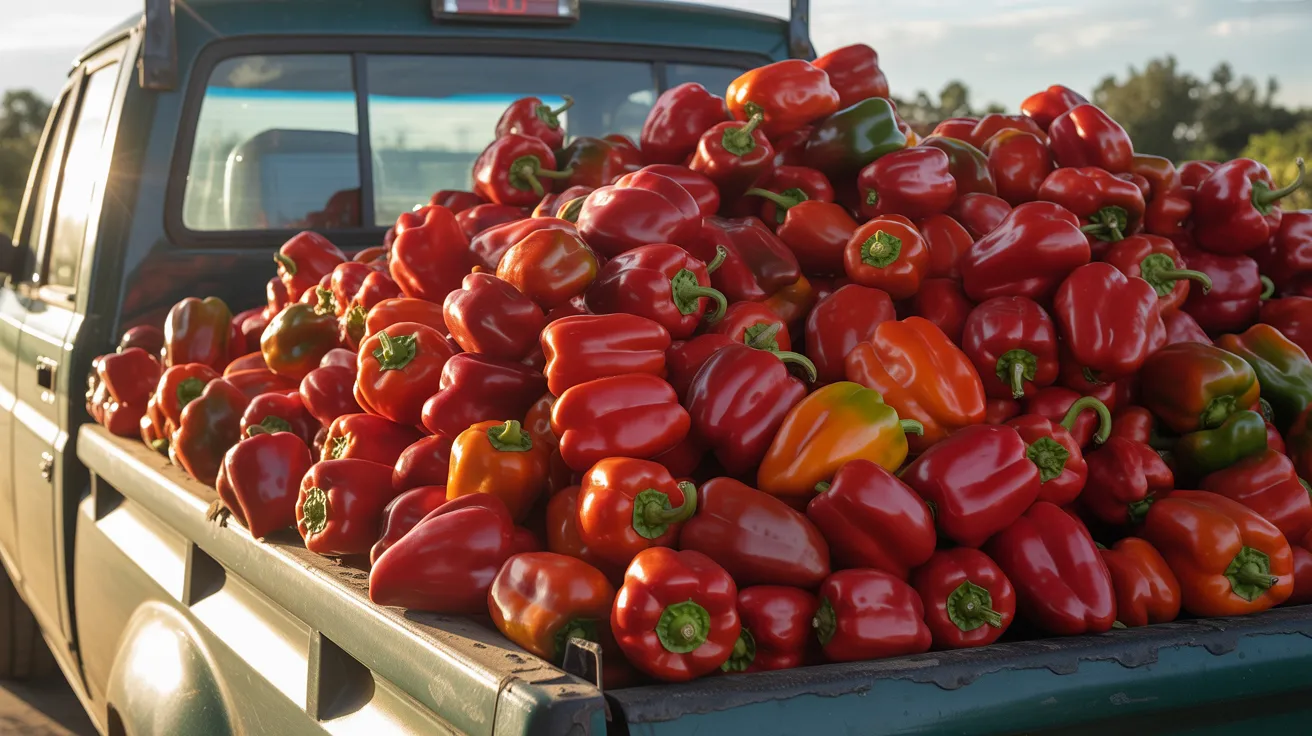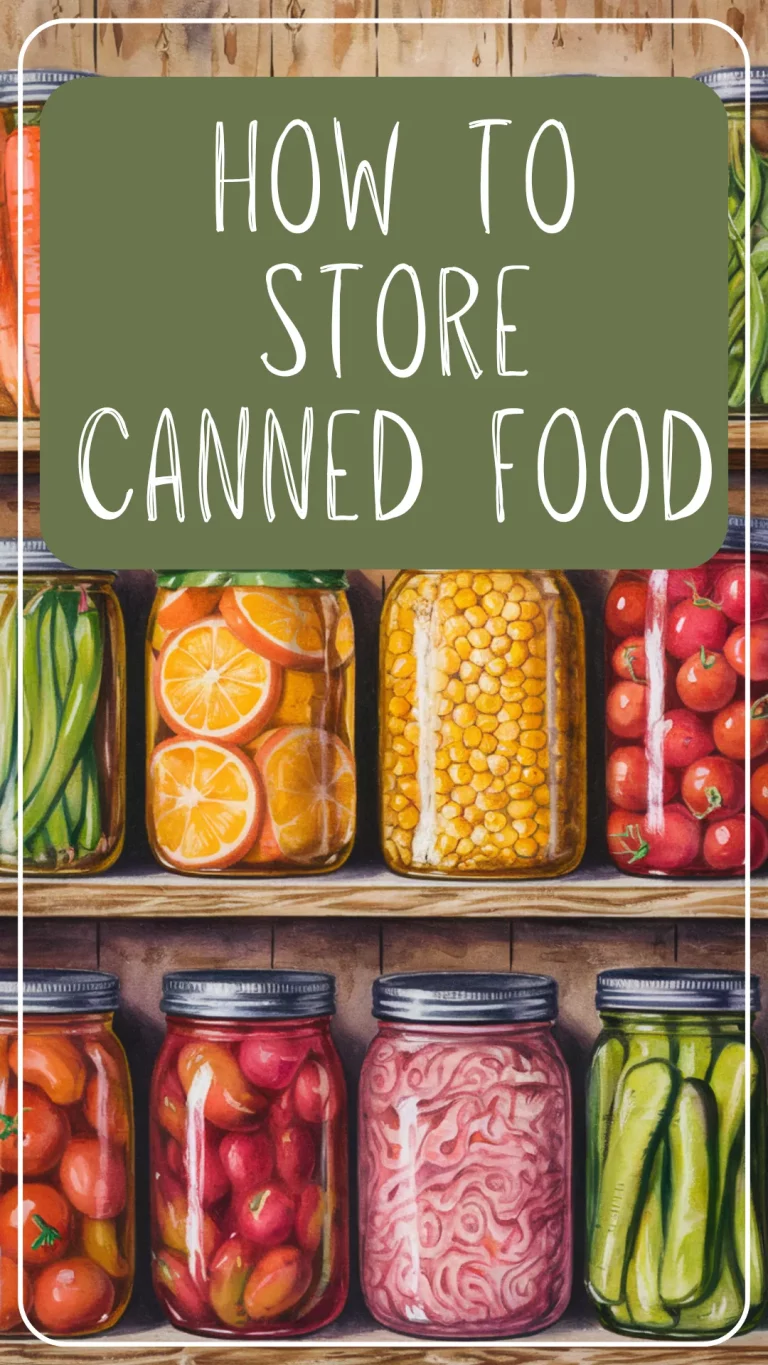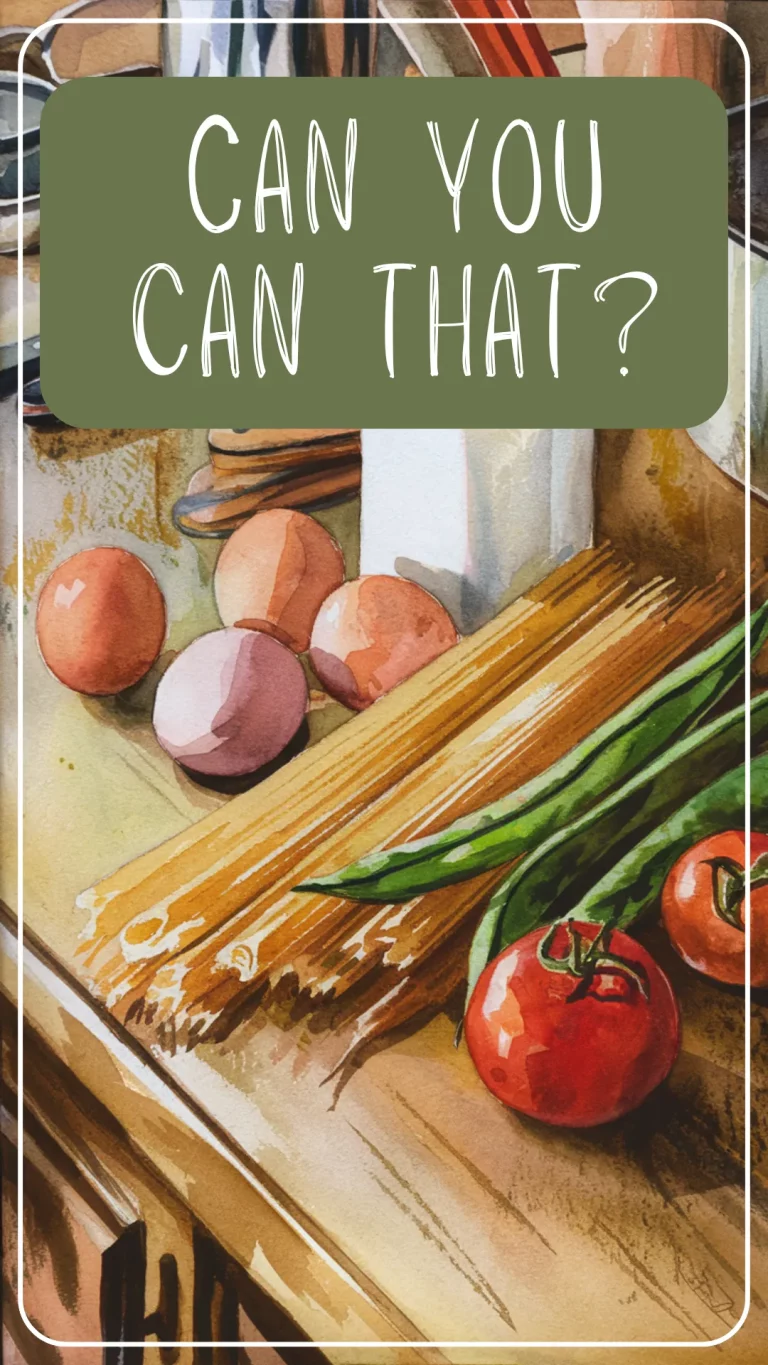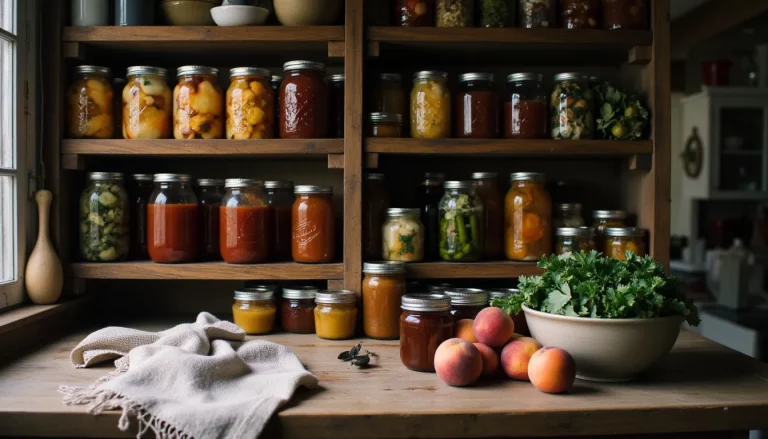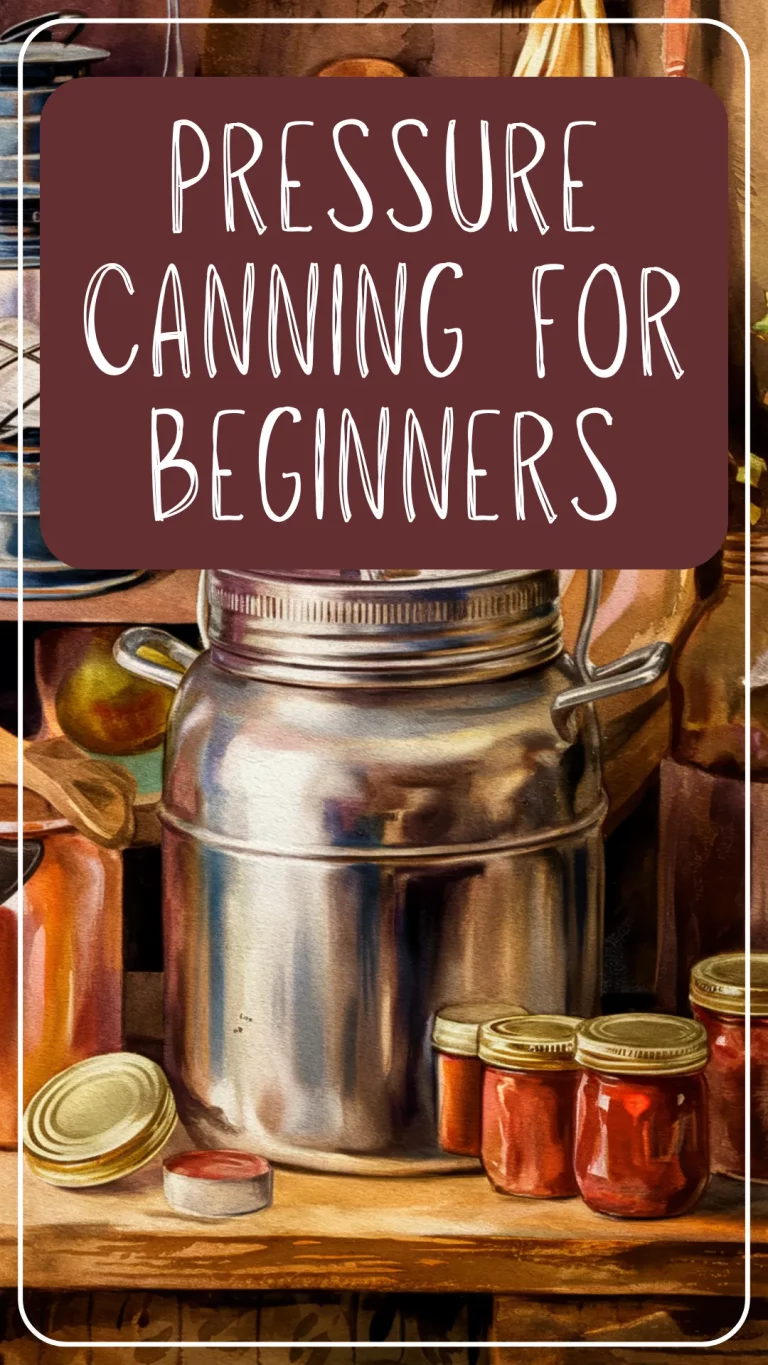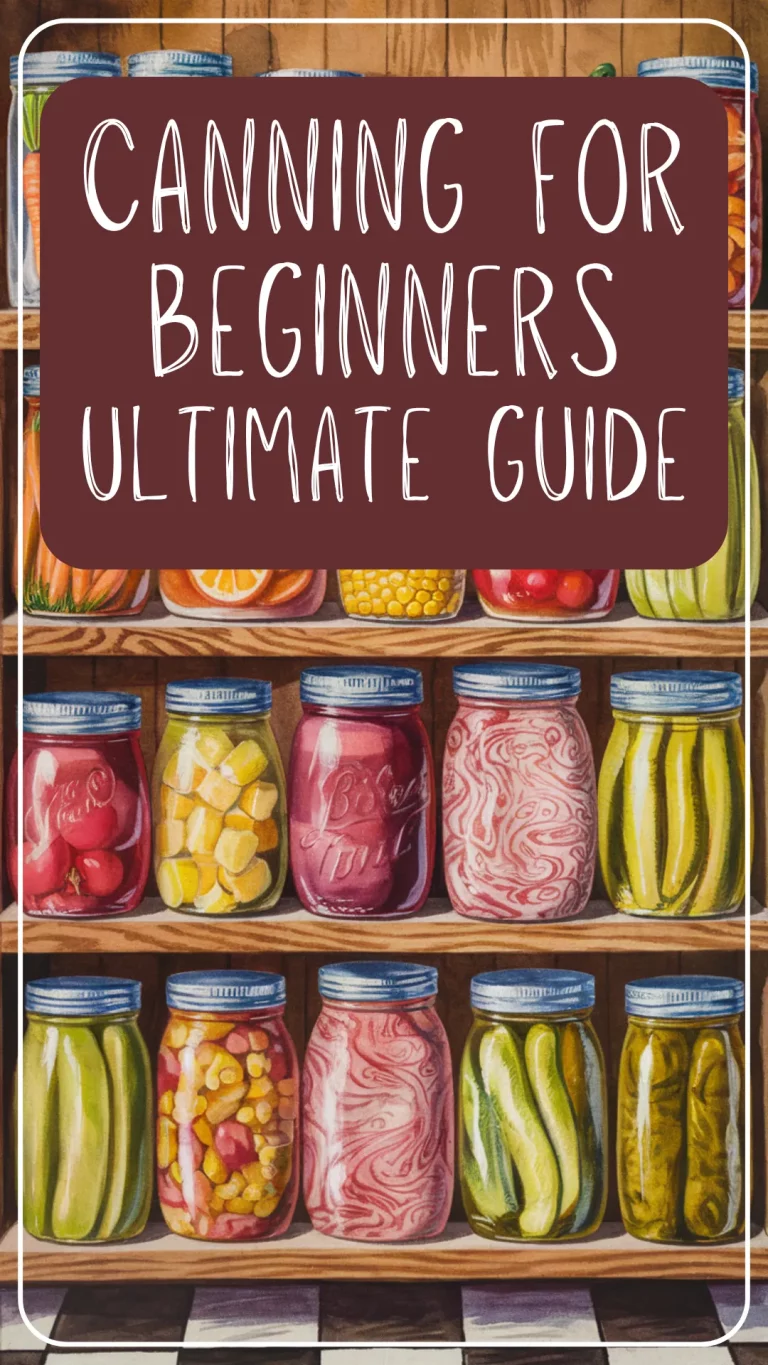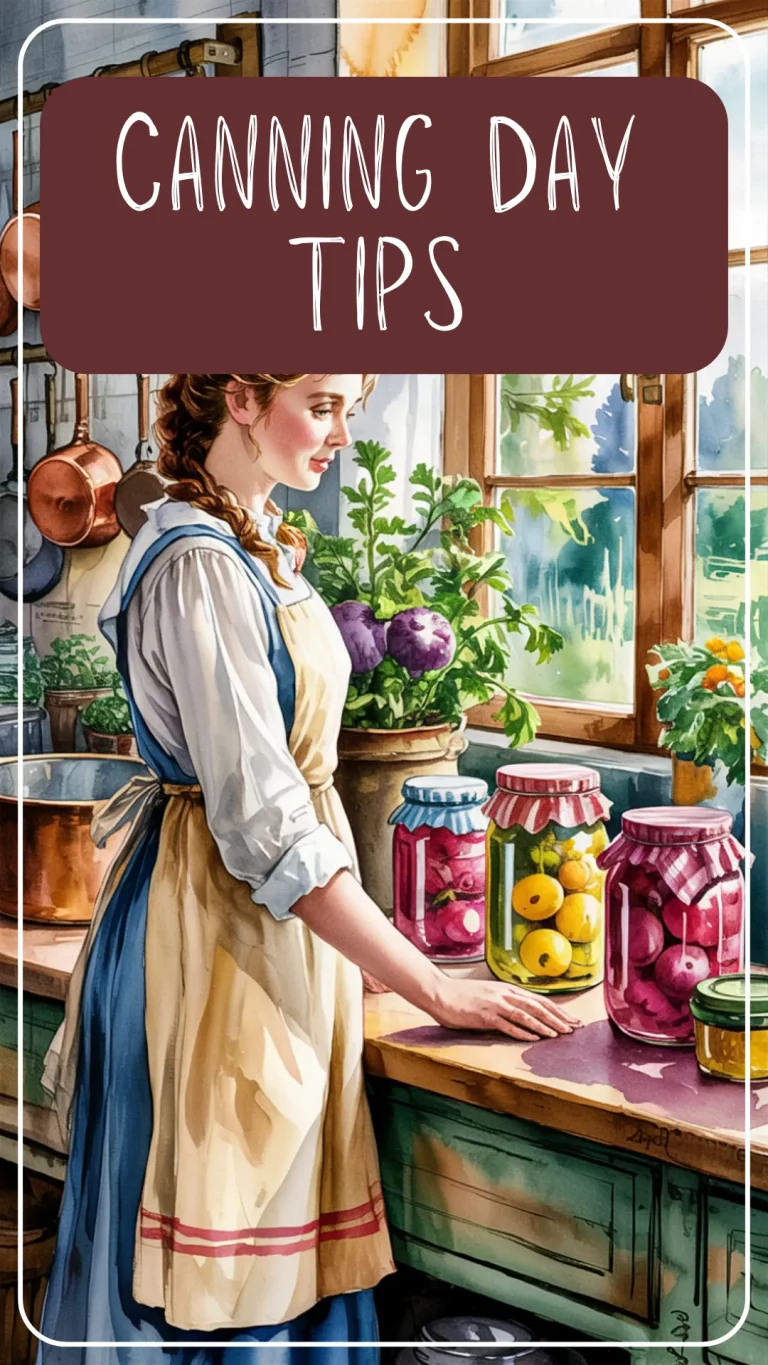What to Do with a Truckload of Peppers (When You Can’t Freeze Them)
We’ve all been there — that moment when good intentions and a generous neighbor collide. You walk into the kitchen with a bag (or six) of peppers, feeling virtuous about “saving them from waste.” Then reality hits: what on earth are you going to do with them all?
That was the situation one canner on Reddit found themselves in when a nearby farmer offered up the last of the pepper field. A few hundred pounds later, they were out of freezer space and full of panic. The thread that followed turned into a goldmine of pepper wisdom — creative, practical, and yes, safe for home preservation.
Here’s how to handle an unexpected pepper windfall, whether it came from your own garden, a neighbor, or a very persuasive roadside stand.
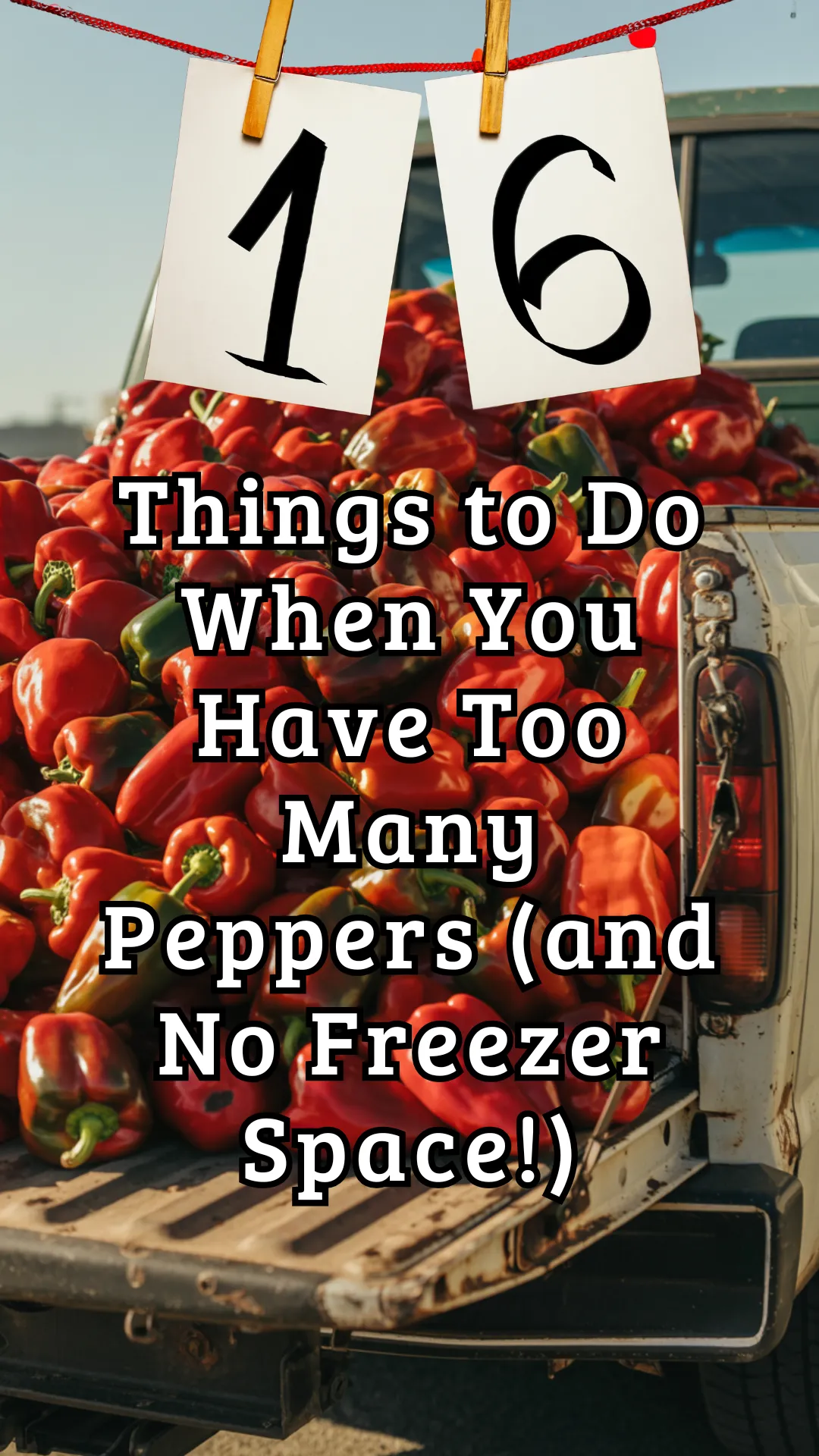
Inside this post:
- 1 Safety Notes Before You Start
- 2 Step One: Triage Before the Peppers Take Over
- 3 Step Two: Pickle, Preserve, and Water-Bath Can
- 4 Step Three: Turn Up the Dehydrator
- 5 Step Four: Roast and Refrigerate
- 6 Step Five: Make Flavorful Spreads and Dips
- 7 Step Six: For the Pressure Canner Folks
- 8 Step Seven: Bake Your Way Through the Surplus
- 9 Step Eight: When All Else Fails: Share and Compost
Safety Notes Before You Start
- Wear gloves and don’t touch your face or eyes while you’re handling or cutting the peppers! When you’re finish wash your hands thoroughly with soap and water.
- Peppers are low-acid. You must add enough vinegar, sugar, or lemon juice to safely water-bath can. Otherwise, pressure can them.
- Never add oil or dairy to canned foods unless the recipe was specifically tested for it.
- Skip oven canning and old family shortcuts. Safe, modern methods preserve both flavor and peace of mind.
“Always stick with tested recipes; the work has been done for you.”
Step One: Triage Before the Peppers Take Over
Start with the basics — and act fast.
1. Sort and assess.
Separate the firm, shiny peppers from any that are soft, wrinkled, or bruised. The good ones can be roasted, pickled, or dehydrated. The soft ones should be cooked down into sauce or jam right away.
2. Wash and dry well.
Any lingering moisture slows down roasting and dehydrating, so give them a good rinse and pat dry.
3. Divide and conquer.
If you’re working alone, think like a short-order cook. Get your ovens roasting, your dehydrator humming, and your biggest pot simmering with pickling brine. You’ll move faster if you’ve got multiple projects running at once.
And if it’s truly too much? Share the bounty. Call a local food pantry, church, or soup kitchen. They’ll likely be thrilled to take fresh produce.
Step Two: Pickle, Preserve, and Water-Bath Can
Peppers are a low-acid food, which means you cannot safely water-bath can them plain. But you can preserve them safely using tested recipes that add enough vinegar or sugar.
Here are some reliable ways to turn that mountain into a shelf of ready-to-use jars.
Pickled Pepper Rings
Sweet, tangy, and endlessly versatile. Slice and pack your peppers in jars, pour over a tested vinegar brine, and process. Perfect for sandwiches, tacos, and antipasto platters.
Here’s a trusted USDA recipe for Pickled Pepper Rings.
Marinated Peppers (with a Tested Oil Brine)
It’s rare, but there are a few approved recipes that safely combine oil and vinegar in a water bath. Follow them exactly and don’t adjust the ratios. The result? Soft, flavorful peppers that brighten salads and sandwiches.
Here’s a recipe for canning Marinated Peppers from the USDA via the University of Georgia.
Pepper Jelly
A classic for a reason. It’s bright, sweet, and a little spicy — and it uses up pounds at a time. Try red pepper jelly on crackers with cheese, or brush it over grilled chicken or salmon for an instant glaze.
Here’s the USDA safe recipe for Pepper Jelly.
Cowboy Candy (Sweet Pickled Jalapeños)
Mix hot and sweet peppers for a milder twist. It’s a crowd-pleaser for nachos, burgers, or even stirred into cream cheese.
Ball has you covered with a safe recipe for Cowboy Candy
Step Three: Turn Up the Dehydrator
When freezer space runs out, the dehydrator earns its keep. Peppers shrink down dramatically, so a dehydrator load can turn into just a few compact jars of flavor.
Homemade Paprika or Pepper Powder
Dehydrate red, orange, and yellow peppers until crisp, then grind them into powder. Roast or smoke them first for even deeper flavor — mesquite or applewood adds magic. You’ll never go back to store-bought paprika again.
Dried Diced Peppers
Fine dice, dehydrate, and store in jars. They rehydrate beautifully in soups, stews, and omelets. It’s like having summer in a shaker.
Pepper “Leather”
Puree roasted peppers, simmer until thick, then spread thinly on dehydrator sheets. When dry, cut into strips. Drop a piece into broth or tomato sauce for an instant roasted-pepper flavor boost.
Check out this recipe for Pepper Leather.
Step Four: Roast and Refrigerate
If you’ve got oven space, roasting is the fastest way to tame a mountain of peppers. The skins slip off easily after steaming under a bowl, and the flavor deepens beautifully.
Roasted Peppers in Oil (Fridge-Only)
Once roasted and peeled, marinate the peppers in cider vinegar and olive oil, then store in the fridge. They’ll last for a couple of months and taste incredible on sandwiches, salads, or cheese boards.
(Just remember: anything with oil must stay refrigerated — it’s not safe for canning.)
Check out this delicious recipe from Foodie with Family for Roasted Peppers in Oil.
“We make jars for the fridge… fabulous in grilled cheese, with crackers and cheese, or in omelets.”
Step Five: Make Flavorful Spreads and Dips
If you’re short on jars but love to cook, turn your peppers into a few flavorful fridge spreads that make everyday meals feel gourmet.
Ajvar
A Balkan red pepper and eggplant spread that’s mild, silky, and versatile. Serve it with eggs, grilled meats, or spread on toast.
Muhammara
A Middle Eastern roasted pepper and walnut dip with a hint of pomegranate molasses. It’s smoky, tangy, and absolutely delicious.
Romesco
A Spanish-style roasted pepper sauce made with almonds, garlic, and olive oil. Perfect over fish or roasted vegetables.
Step Six: For the Pressure Canner Folks
If you do have a pressure canner, you’ve got even more options — just remember that plain peppers, soups, or sauces without added acid must be pressure canned to be safe.
Try:
- Roasted or plain peppers (no oil, packed in water)
- Red pepper and tomato soup base (add cream only when serving)
Step Seven: Bake Your Way Through the Surplus
A few clever cooks suggested ways to eat through peppers now while the jars process.
Stuffed Peppers
Mix ground beef or sausage with rice, beans, or corn, stuff the peppers, and bake. They reheat beautifully and freeze well if you reclaim freezer space later. Stuffed Peppers are also great for sharing, you have ready made meals to take to a potluck or you could take a batch down to your local Fire House.
Peppered Cornbread
Add a cup of finely diced roasted peppers to your favorite cornbread recipe for a subtle sweetness and a hint of color. It pairs beautifully with chili.
Check out this recipe from Serious Eats for Peppered Cornbread.
“Peppered cornbread is my favorite… maple syrup complements colored bells beautifully.”
If you’re truly drowning in peppers, share with your local food bank or soup kitchen. And if a few are too far gone, don’t beat yourself up — compost them and know they’ll feed next year’s soil.
A mountain of peppers might look like a problem at first, but it’s really an opportunity — to stock your pantry, experiment with flavors, and maybe make a few neighbors very happy. Between the jars, powders, and sauces, you’ll never look at a humble pepper the same way again.
So take a deep breath, roll up your sleeves, and remember: it’s amazing what you can do when you’ve got a kitchen full of peppers and a can-do spirit.
